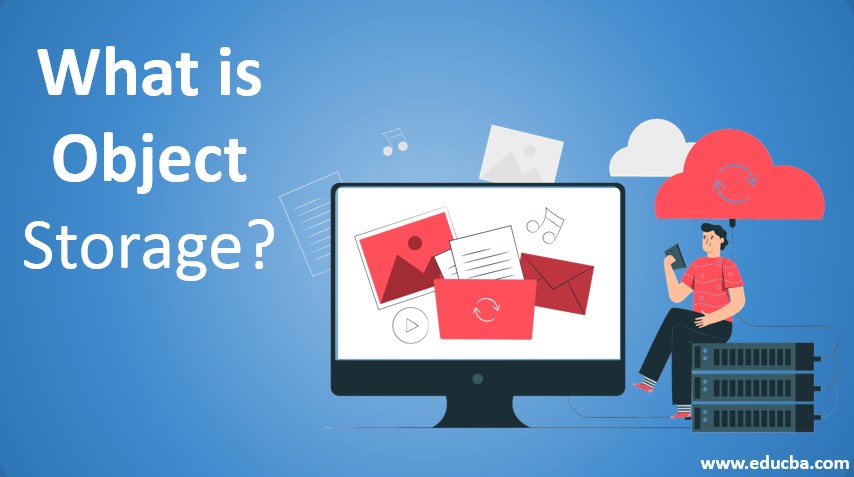Updated June 17, 2023

Introduction to Object Storage
Object Storage is managed as distinct units where data is stored in object storage. All the objects are stored in a single server and not mixed with other files or folders. All the pieces of data are combined to form a file; an identifier is given to the file, and the relevant metadata is added. There is no hierarchy system of storage in object storage. The tier system is eliminated, and flat address space is created. This address space is called the storage pool. This provides an analysis of the usage of files and functions.
Any amount of data can be added, and there is no limit to the same. In short, the data is scalable to any extent. Object storage eliminates hierarchy and assigns a unique identifier to each stored data. This helps to retrieve data faster than any other storage. The identifier facilitates the retrieval of data without relying on the folder hierarchy. This is a tremendous advantage of object storage. The cost is significantly less as it is easy to scale the storage. Offering customizable metadata reduces the cost.
Why Do We Use Object Storage?
The reason for using it is mainly for its scalability. We can scale object storage as and when required. Managing and decoupling the file system achieves scalability. This helps use the storage for servers with higher priority works and more development projects. Data is growing daily, and traditional methods cannot solve the data storage problem as it is mainly SAN and NAS storage systems. It has cloud technology that uses the public cloud to provide users with a cost-efficient and scalable environment. Storing any amount of data doesn’t cause performance problems.
Data resides in a single namespace, and using codes can maximize disk space. The system explicitly arranges and stores all files as objects. It effectively manages data and its functions. It does the versions of data, customizes metadata, and looks after the metadata analytics. Storing only high-level details eliminates low-level ones, keeping the files scalable.
Use Cases
- Managing unstructured data results in the presence of rich media for the entire file system. Globally sharing files and media reduces their costs.
- Globally distributing the media and establishing numerous connections with other systems offers advantages.
- It effectively manages and explains the distributed content. The data cycle optimizes the value of the data, helping to provide services competitive with other services.
- It uses digital technologies within the system. It uses the Internet of Things, manages communication of machines, and analyses data efficiently; artificial intelligence supports the use and management, helping designers control costs and time during the design process.
Benefits
- It retrieves data faster than any other storage. Additionally, the network and other systems facilitate faster data recovery. This makes object storage stand out when compared with different storage types. We must review all folders because each file receives a unique identification number. Also, users need not worry about the location of the data.
- Administrators can use different rules for data preservation, updating, and deletion. The entire data structure receives the storage points, facilitating issue-free data recovery and retrieval.
- Object storage’s flat environment, unrestricted by hierarchy, allows the storage of any data type. The access provided to data storage differs from other storage, so users prefer object storage over others.
- We can create any number of attributes and customize them according to the priority of users. We need not use any separate application for this purpose which is also an advantage.
- Scalability is a significant advantage as it helps store large amounts of data at less cost. The scalability of data storage reduces costs because it allows for better data management, storing all data within a single namespace or server. Storage becomes usable in small and big projects alike as a result.
- Developer support for object storage is also less as the code manages the process. Data integration is also essential for data storage.
Conclusion
You cannot store one data file within another because the storage pool holds the data. There are many benefits to using object storage, and this makes the storage worthy of systems. We can use it with AWS, which helps the storage mount with other systems well with different properties.
Recommended Articles
This is a guide to What is Object Storage? Here we discuss the Introduction to Object Storage, Why we use Object Storage, and its Benefits. You can also go through our other suggested articles to learn more –


